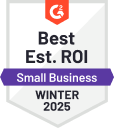What is Cold Calling? Strategies, Effectiveness, and Insights

Cold calling involves reaching out to potential customers who have not previously expressed interest over the phone. While cold calling is often viewed through a lens of skepticism, its advantages should not be overlooked.
Key takeaways:
- Preparation is Crucial: Successful cold calling starts with thorough preparation. This includes researching your prospects, understanding their business challenges, and tailoring your pitch to address their specific needs and pain points. Preparation boosts confidence and increases the likelihood of a positive response.
- Personalize Your Approach: Personalization can significantly improve your cold calling success rate. Use the information gathered during your preparation to personalize your conversation, demonstrating that you’ve taken time to understand the prospect and their business. This approach helps build rapport and keeps the prospect engaged.
- Practice Active Listening: Active listening is key to navigating a cold call successfully. It involves fully concentrating, understanding, responding, and remembering what the prospect says. This skill enhances the ability to identify and address the needs of potential clients more effectively, thereby increasing the chances of converting the call into a sales opportunity.
- Handle Objections Gracefully: Objections are a normal part of the cold calling process. Being prepared to handle them gracefully and confidently is essential. Understand the most common objections you might face and have responses ready that address these concerns while ensuring the conversation progresses smoothly.
- Follow-Up is Essential: The initial cold call is often just the beginning of a sales process. Following up is crucial to nurture the relationship and move the prospect through the sales funnel. Whether it’s sending a thank-you email, additional information, or scheduling a follow-up meeting, timely and thoughtful follow-up actions can significantly increase your success rate.
Ready to turn cold calls into warm leads?
What is the Importance of Cold Calling in the Sales Process?
Cold calling continues to be an important factor in the sales process despite the rise of digital marketing strategies and social media advertising. There are several reasons for that:
1. Lead Generation
Cold calling is a proactive method to generate new leads. It allows salespeople to reach out directly to potential customers who might not be aware of the product or service. This can be particularly effective in identifying prospects in markets that are not easily reached through other forms of advertising or digital marketing efforts.
2. Immediate Feedback
It provides immediate feedback from potential customers. Salespeople can gauge a prospect’s interest level directly and adjust their sales pitch accordingly in real time, which is not always possible through other sales channels.
3. Personal Touch
Cold calling adds a personal touch to the sales process. Speaking directly to a potential customer allows for a more personalized sales approach, which can help build rapport and trust, even if the initial call does not result in a sale, but raises awareness of the brand.
4. Market Research
It offers valuable insights into market trends and customer needs. Through conversations with potential customers, salespeople can gather information about common objections, questions, and the overall market demand. That can create information for future sales and marketing strategies.
5. Cost Effectiveness
For some businesses, especially small and medium size companies, cold calling can be a cost-effective sales strategy. It requires minimal investment, making it an attractive option for businesses with limited budgets.
6. Control and Flexibility
Sales teams control the timing, message, and target audience of their cold calls. This flexibility allows for quick adjustments based on what is or isn’t working.
How to Create Cold Calling Strategy
Crafting a winning cold calling strategy involves a combination of preparation, personalization, and persistence, along with a deep understanding of your product or service and your target market. Here’s a structured approach to help you create an effective cold calling strategy:
1. Define Your Objectives and Target Audience
Objectives: Clearly define what you aim to achieve with your cold calling efforts. It could be setting appointments, generating leads, or directly selling a product or service.
Target Audience: Identify what your Ideal Customer Profile (ICP) is. Consider factors like industry, company size, job title, and the challenges they face that your product or service can solve.
2. Develop a Strong Value Proposition
Unique Selling Proposition (USP): What makes your offering unique? Be prepared to articulate this succinctly.
Benefits: Focus on how your product or service can benefit the recipient, not just its features.
3. Create a Script and Personalize Your Approach
Script Development: Draft a script that outlines the course of your conversation. Include an introduction, your service offer, and common objections with corresponding counterarguments. However, use it as a guideline rather than a strict script to keep conversations natural.
Personalization: Research your prospects before calling. Use LinkedIn, company websites, and social media to find information that can help personalize your pitch. You can even leverage a LinkedIn scraper and automation tools to efficiently gather and analyze the data you need to craft targeted messages.
4. Practice Active Listening
Engage in the Conversation: Listen to what the prospect is saying. Their responses can guide you to tailor your pitch and address their specific needs.
5. Follow-Up Strategy
Persistence: It often takes multiple touches to convert a prospect. Plan a follow-up strategy that includes emails—ideally automated through email marketing software, additional calls, or social media engagement, but be mindful not to become intrusive.
6. Use Technology to Your Advantage
CRM Tools: Utilize Customer Relationship Management (CRM) software to track your calls, follow-ups, and notes about each prospect.
Call Analytics: Analyze call data to identify patterns, best calling times, and strategies that work.
7. Training and Continuous Improvement
Training: Invest in training sessions for your sales team to improve their cold calling techniques.
Feedback and Adaptation: Regularly review your approach and adapt based on feedback and results. What works can change over time or across different segments. It is important to conduct regular analytics to notice these changes and be able to respond to them.
8. Set Realistic Goals and Measure Performancee
Goal Setting: Set achievable goals for your team to motivate them.
KPIs: Track key performance indicators (KPIs) like call-to-appointment ratio, conversion rate, and call duration to measure success and areas for improvement.
A winning cold calling strategy is dynamic and adjusts to feedback and market changes. By understanding your audience, refining your pitch, and using data to guide your efforts, you can increase the effectiveness of your cold calling campaigns.
Is Cold Calling Out of the Game? Explore Its Advantages!
As of 2024, the debate on the effectiveness of cold calling in sales strategies continues, reflecting a broader discussion about traditional versus modern sales tactics. Cold calling is not “done,” but its effectiveness and reception have evolved due to technological changes, buyer behavior, and regulatory environments. Let’s explore why Cold calling is still relevant.
1. Direct Interaction and Immediate Feedback
Cold Calling allows you to directly interact with potential customers, providing an immediate platform for feedback and engagement. This direct communication allows salespeople to assess a prospect’s interest, answer questions in real time, and adjust their pitch accordingly. It also identifies pain points, objections, and customer needs that might not be as apparent through other marketing channels.
Use Case: In B2B sales, especially in industries like software or services where solutions are complex, direct conversations allow for detailed explanations and personalized demonstrations that can address specific client concerns.
2. Personalization and Relationship Building
Cold calling stands out for its capacity to personalize outreach efforts. Based on preliminary research about the potential customer or their company, sales reps can overcome the disadvantages of a general pitch and tailor their message. This personalized approach can lay the groundwork for building a relationship, even if the call does not result in an immediate sale.
Use Case: In the financial services industry, where trust and personal rapport are crucial, cold calling can be an effective way to introduce services and establish a foundation for future interactions.
3. High Targeting Precision
One of the key advantages of cold calling is the ability to precisely target potential customers. Compared to general advertising or digital marketing, cold calls can target specific people or companies who are likely to be interested in the product or service.
Statistic: While the average cold calling success rate is often given at around 2%, you can increase your B2B cold calling success rate up to 10 %.
4. Opportunity to Bypass Digital Noise
With the saturation of digital sales channels, emails, and social media messages can often go unnoticed or be ignored. Cold calling cuts through the digital clutter, ensuring that the message is delivered directly to the potential customer. This can be particularly effective in reaching decision-makers who are swamped with digital communications but may be more receptive to a direct conversation.
Use Case: The personalized approach and the opportunity to immediately address questions and concerns lead to increased interest, special in industries with high competition and email marketing saturation, such as SaaS (Software as a Service).
5. Flexibility and Adaptability
Cold calling allows salespeople to immediately adapt their approach based on the interaction with the prospect. This flexibility is not as easily achievable with pre-planned marketing campaigns or automated digital marketing strategies. Real-time adjustments can significantly increase the chances of engaging a potential customer.
Use Case: A sales representative cold-calling for a new software solution can adapt the offer to the specific concerns of the prospect in real time. This personalized approach, which is not possible in static marketing, increases the likelihood that the prospect will be engaged and convinced.
When is Cold Calling not effective?
Cold calling, while important, faces challenges like consumer resistance, strict regulations, and the need for skilled salespeople. Its success varies across industries and depends on the target market’s receptiveness. Consequently, cold calling is blended with strategies such as email marketing, social media, and content marketing to prepare leads before calling.
In the modern sales landscape, cold calling works best as part of a comprehensive, multi-channel strategy that aligns with customer preferences and uses technology and data for personalized outreach.
Sales professionals combining traditional and digital methods are more likely to succeed.
There are several factors impacting the effectiveness of cold calling. These are:
1. Regulations and Compliance:
Regulations like the General Data Protection Regulation (GDPR) in the European Union, the Telephone Consumer Protection Act (TCPA) in the United States, and various do-not-call lists in other regions have tightened the rules around unsolicited calls, requiring businesses to be more cautious and respectful in their outreach efforts.
2. Advancements in Technology:
Caller ID, spam filters, and voicemail have made it easier for people to screen calls, reducing the likelihood of cold calls reaching their intended recipients. Moreover, advanced applications and services are now accessible to detect and prevent spam calls before they even ring.
3. Evolution of Consumer Behaviour:
One argument against cold calling is the shift in consumer behavior towards digital platforms. Today’s consumers often prefer to research products and services online before making a purchase decision. They might view unsolicited calls as intrusive or disruptive, especially when they rely on digital channels for information and engagement. Yet, this does not always apply. For certain sectors like B2B services voice-based outreach is still effective.
How to Overcome Challenges in Cold Calling
By understanding and addressing common roadblocks, sales professionals can enhance their cold calling effectiveness, leading to increased lead generation and sales success. Here’s an insight into navigating these challenges successfully.
1. Reaching Decision Makers
Challenge: One of the most significant hurdles in cold calling is getting past gatekeepers to speak with decision-makers. Often, calls are intercepted, leading to messages being lost or ignored.
SOLUTION:
Research and use targeted approaches to directly reach decision-makers. LinkedIn and other professional networks can provide valuable insights. Moreover, crafting a compelling and concise value proposition can persuade gatekeepers to connect you with the right person.
2. Dealing with Rejection
Challenge: Rejection is an inevitable part of cold calling. Frequent negative responses can impact a salesperson’s motivation and confidence.
SOLUTION:
Develop a resilient mindset where rejection is seen as a step closer to a ‘yes.’ Training and role-playing exercises can desensitize sales teams to rejection, helping them handle it more constructively. Tracking and celebrating small wins can also boost morale.
3. Lack of Personalization
Challenge: Generic pitches are often ineffective. Today’s savvy consumers and business clients expect personalized interaction that addresses their specific needs and pain points.
SOLUTION:
Leverage customer data and insights to tailor your pitch. Use CRM tools to gather information on prospects’ industries, business sizes, and potential challenges. Personalizing your approach can significantly increase engagement and interest.
4. Poor Timing
Challenge: Calling at an inconvenient time can annoy potential leads, reducing the chances of a successful engagement.
SOLUTION:
Utilize data and analytics to identify the best times to call prospects. Studies suggest that mid-to-late afternoon, especially Wednesdays and Thursdays, are optimal. However, this can vary by industry and target demographic, so adjust strategies accordingly.
5. Inadequate Follow-Up
Challenge: Many salespeople fail to follow up adequately after the initial call, missing out on potential sales opportunities.
SOLUTION:
Implement a structured follow-up strategy. Use a mix of communications, including emails, calls, and social media interactions, to keep in touch with prospects. These follow-ups form part of a larger strategy to boost your sales pipeline. Persistence, combined with value-driven communication, can eventually convert leads into customers.
6. Lack of Value Proposition
Challenge: Failing to quickly communicate the value of your product or service can lead to lost interest from potential leads.
SOLUTION:
Develop a clear, compelling value proposition that addresses the prospect’s specific challenges and goals. Practice delivering this proposition succinctly and confidently to make a strong first impression.
7. Navigating Objections
Challenge: Objections are common in cold calling, but not all salespeople are equipped to handle them effectively.
SOLUTION:
Train sales teams in objection handling techniques, such as active listening and empathetic responses. Preparing responses to common objections can help turn scepticism into interest.
8. Staying Compliant and Ethical:
Successfully navigating legal complexities and upholding ethical standards demands a proactive approach to compliance, privacy, and integrity. Sales teams must stay abreast of the evolving regulatory landscape in their operational areas, continually updating their understanding of legislative changes to ensure their sales methods comply with these requirements.
Challenge: Adhering to consumer consent and preferences while ensuring data privacy and security is vitally important. Contemporary regulations often mandate explicit consent for certain cold outreach activities, especially in B2C scenarios. Improper handling of personal information obtained during sales activities can result in privacy violations and legal repercussions.
SOLUTION:
To maintain compliance, it’s important to regularly update call lists to reflect do-not-call registries and to promptly act on opt-out requests. Embedding data privacy and security into daily sales operations is non-negotiable. Conducting regular audits and providing ongoing data protection training are key steps to underscore these commitments, ensuring that sales practices are both respectful and legally compliant.
The key to successful cold calling in the modern sales environment is adaptation. Tailoring strategies to respect current consumer preferences and integrating them within a broader, multi-channel approach to lead generation and sales is key.
Conclusion
As we look towards the future of cold calling in sales, it’s clear that this established technique is set for a transformation rather than obsolescence. Cold calling is not just about making calls; it’s about making connections. The success hinges on a nuanced understanding of customer needs, personalized communication, and strategic persistence.
Shape the future of your sales calls.
FAQs
What is cold calling?
The call is u0022coldu0022 because there is no pre-existing relationship or awareness of the product/service on the part of the recipient. Potential customers have not previously interacted with the salesperson or shown any explicit interest in the product or service. Cold calling is primarily used for lead generation and outreach to expand the customer base by introducing the product or service to new prospects.
Is Cold Calling Still Effective in 2024?
Cold calling faces challenges, such as increasing resistance from consumers to unsolicited calls, strict regulations, and the need for skilled personnel who can effectively engage potential customers. It remains a potent tool for generating leads and closing sales when executed correctly, but due to changing sales trends, it faces new challenges that require implementing effective solutions.
What is cold calling in sales?
Cold calling in sales is a direct marketing strategy where salespeople contact potential customers who have not previously expressed interest in the offered products or services. This outreach is typically conducted via telephone calls but can also include door-to-door visits or email campaigns. The primary goal of cold calling is to introduce the product or service to potential buyers, hoping to spark interest and convert them into customers. Despite its reputation for being challenging, cold calling remains a crucial technique for generating leads, building sales pipelines, and ultimately, driving sales.
























